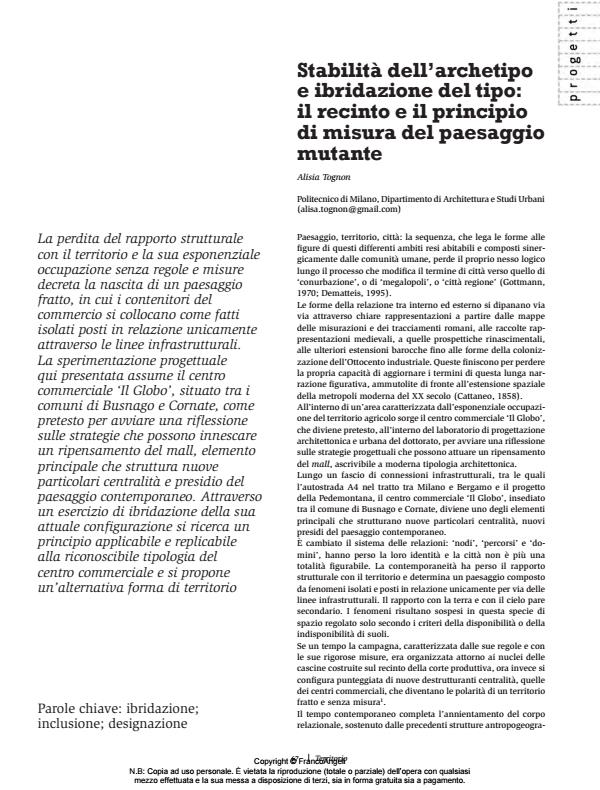Stability of the archetype and hybridisation of the type: the perimeter and the principle of proportionality in the changing landscape
Journal title TERRITORIO
Author/s Alisia Tognon
Publishing Year 2014 Issue 2014/68
Language Italian Pages 5 P. 67-71 File size 2734 KB
DOI 10.3280/TR2014-068012
DOI is like a bar code for intellectual property: to have more infomation
click here
Below, you can see the article first page
If you want to buy this article in PDF format, you can do it, following the instructions to buy download credits

FrancoAngeli is member of Publishers International Linking Association, Inc (PILA), a not-for-profit association which run the CrossRef service enabling links to and from online scholarly content.
The loss of the structural relationship with the territory and its exponential occupation, unregulated and unrestrained, breeds a fractured landscape, where the silos of commerce stand as isolated outposts that interact only along infrastructure corridors. The planning experiment presented here takes the case of the ‘Il Globo’ shopping centre, between the Lombard municipalities of Busnago and Cornate, as a pretext for studying the strategies that can encourage a rethink of the mall as a key element proffering new and notable centralities and a landmark in the contemporary scene. An exercise to hybridise its current configuration leads to a principle that can be applied and replicated to the recognisable type that is the shopping centre, to advance an alternative form of land use.
Keywords: Hybridisation; inclusion; designation
Alisia Tognon, Stabilità dell’archetipo e ibridazione del tipo: il recinto e il principio di misura del paesaggio mutante in "TERRITORIO" 68/2014, pp 67-71, DOI: 10.3280/TR2014-068012